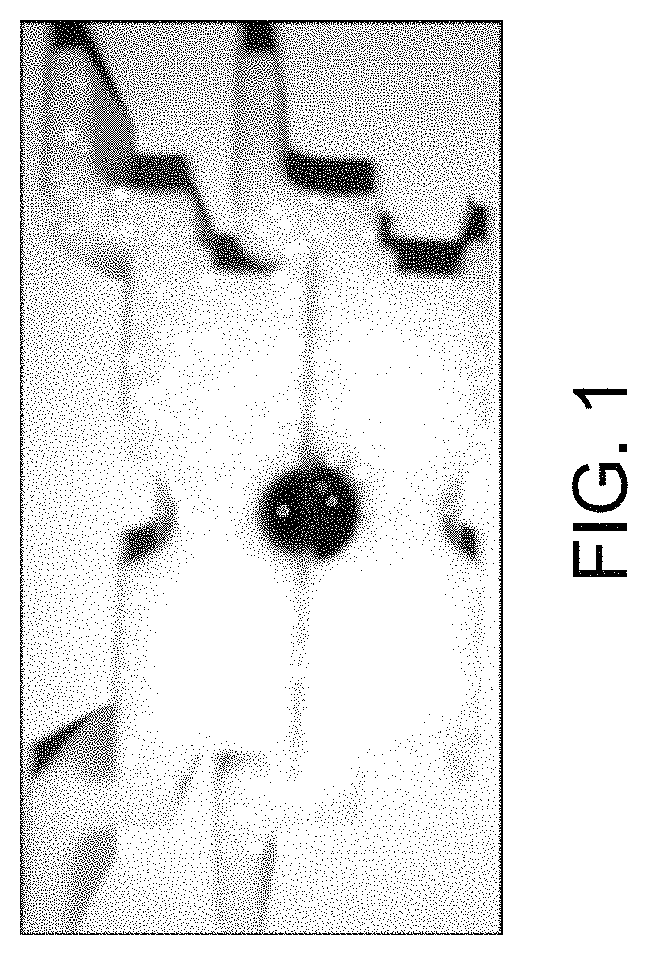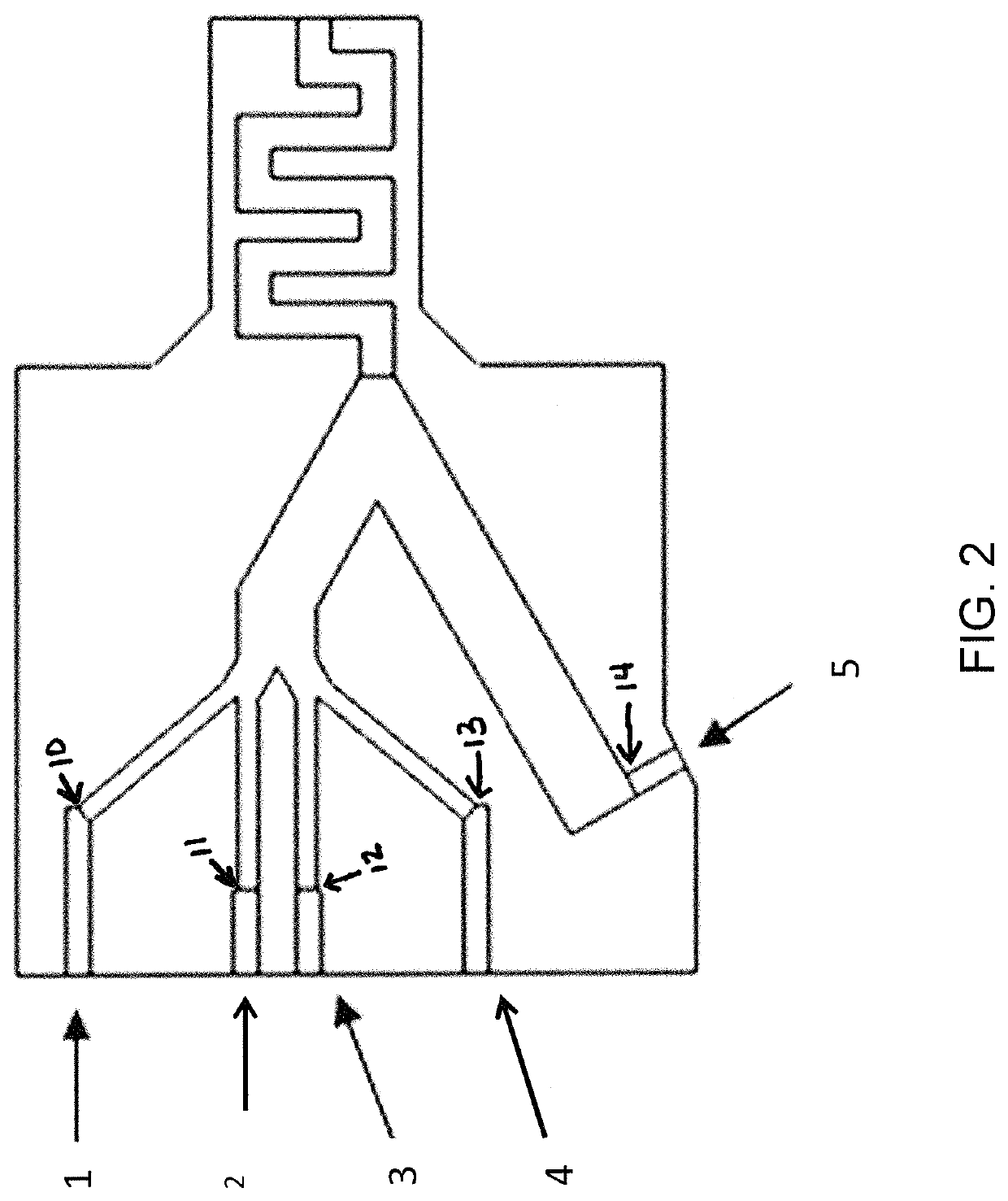Device and methods of using device for detection of hyperammonemia
a technology of hyperammonemia and detection device, which is applied in the field of devices and methods of using devices for detection of hyperammonemia, can solve the problems of large, cumbersome, and expensive machinery, and the testing of ammonia levels, and achieves the effects of reducing and increasing the risk of strok
- Summary
- Abstract
- Description
- Claims
- Application Information
AI Technical Summary
Benefits of technology
Problems solved by technology
Method used
Image
Examples
example 1
[0303]The presented work demonstrates how the systematic investigation of previously known technologies yielded the fabrication of an effective blood ammonia sensor. The indophenol reaction, in tandem with a polyelectrolyte membrane, was explored as a means to quantify ammonia concentrations in whole blood.
[0304]The ammonia-indophenol standard curve was produced using a range of ammonium chloride concentrations in 1× phosphate buffered saline (PBS) of 0 to 750 μM. The following concentrations were utilized in the indophenol reaction: 59 mM 2-phenylphenol in ethanol, 7 μM sodium nitroprusside in water, 500 mM sodium hydroxide in water, and 0.2-0.25% aqueous hypochlorite. These concentrations were mixed in a 1:1:1:0.5 ratio with an equal volume of the ammonium solution of interest and allowed to react at room temperature for 10 minutes. The absorbance of the resulting solution was measured at a wavelength of 635 nm.
example 2
[0305]The reagents utilized in the indophenol reaction were investigated for long term stability. Aqueous solutions of hypochlorite, sodium nitroprusside, sodium hydroxide and a solution of 2-phenylphenol in ethanol were stored in separate 50 mL falcon tubes, with limited exposure to light. At intervals of 3, 5, 7, 15, 21, 28, 35, 50, 75 and 100 days the hypochlorite, sodium nitroprusside, sodium hydroxide and 2-phenylphenol were utilized to develop a standard curve using ammonia concentrations ranging from 0-750 μM. Significant deviations from the original standard curve indicated the degradation of the stored reagents. It should be noted that fresh ammonia samples were utilized at each test interval.
Response to Amino Acids
[0306]Primary amines can also undergo the indophenol reaction. Total amino acid concentrations in blood can be as high as 2.5 mM, therefore the selectivity of 2-phenylphenol was determined in the indophenol reaction. 1 mM solutions of each of the 21 amino acids w...
example 3
Ammonia in Whole Blood with a Fluidic Device
Materials
[0320]2-phenylphenol, sodium nitroprusside, sodium hydroxide, sodium hypochlorite, sodium acetate, and ammonium chloride were purchased from Sigma-Aldrich. Nafion 111 was purchased from Ion-Power.
Methods
[0321]Sensor Design and Construction
[0322]A bisected well containing whole human blood in one section and a solution of sodium acetate in the other provide a means for cation exchange of the whole blood to occur, yielding a high recovery of the ammonium. Modular well-halves were 3D printed from acrylonitrilebutadiene-styrene thermoplastic. The pieces snap together with the 1 cm2 Nafion 111 membrane in the middle, forming a Nafion bisected well. This design was chosen to provide a uniform platform for all future experiments involving this sensing method. A silicone gasket, at a 1 / 64 inch thickness, was glued to the inner face of each well-half to ensure a water tight seal.
Extracting Ammonia
[0323]Sodium acetate was utilized to extrac...
PUM
| Property | Measurement | Unit |
|---|---|---|
| mass | aaaaa | aaaaa |
| mass | aaaaa | aaaaa |
| volume | aaaaa | aaaaa |
Abstract
Description
Claims
Application Information
 Login to View More
Login to View More - R&D
- Intellectual Property
- Life Sciences
- Materials
- Tech Scout
- Unparalleled Data Quality
- Higher Quality Content
- 60% Fewer Hallucinations
Browse by: Latest US Patents, China's latest patents, Technical Efficacy Thesaurus, Application Domain, Technology Topic, Popular Technical Reports.
© 2025 PatSnap. All rights reserved.Legal|Privacy policy|Modern Slavery Act Transparency Statement|Sitemap|About US| Contact US: help@patsnap.com



